A Comal County ranch owner ponders selling his land, setting off another clash between property rights and environmental concerns
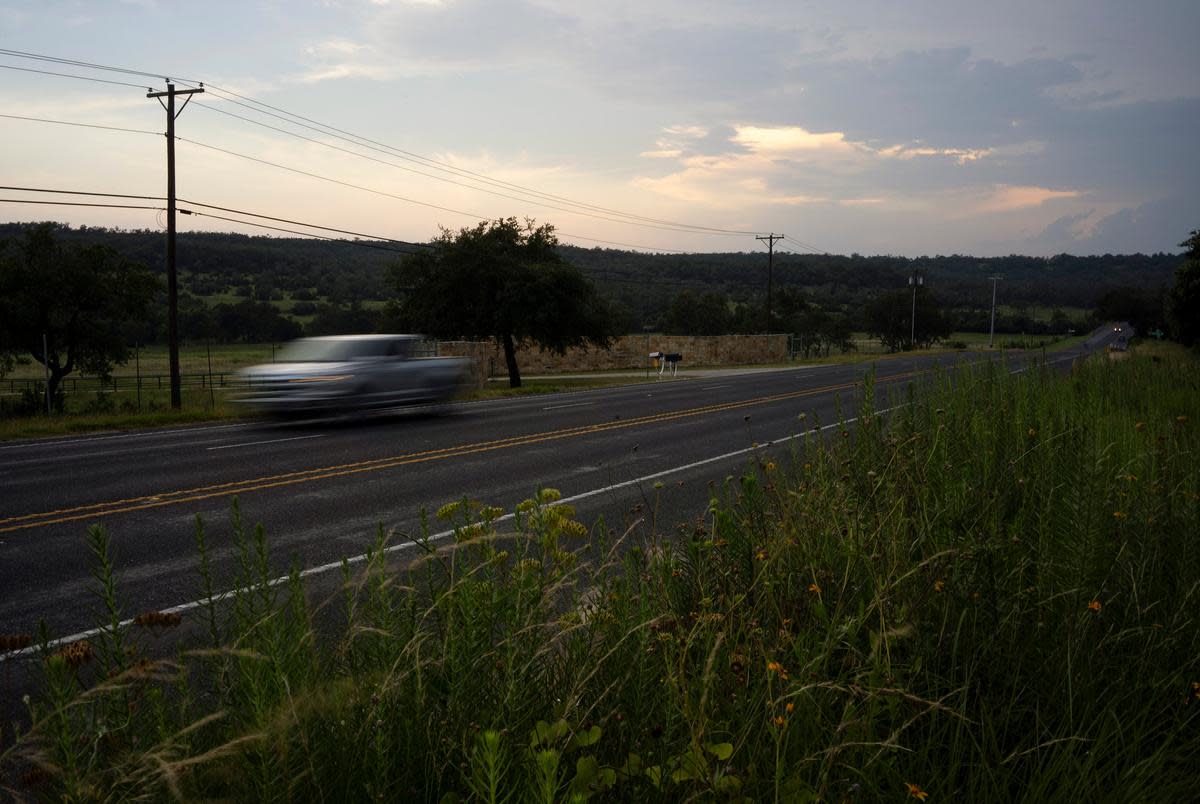
COMAL COUNTY — Facing a two-lane highway about 13 miles west of New Braunfels, a 546-acre ranch hugging the west fork of Dry Comal Creek has caused a stir in the community.
Behind a small gate, hills dotted with live oaks and a few freely roaming horses can be seen. But neighbors and environmentalists worry it won’t remain this way.
Doug Harrison, a retired entrepreneur, and his wife have lived and raised their family on the ranch for the past two decades. But late last year, Harrison filed an application with the state to build a wastewater treatment plant on the property large enough to serve a 1,400-lot subdivision.
The permit would allow 600,000 gallons of treated wastewater per day to be discharged into the west fork of Dry Comal Creek, which connects to the Comal and Guadalupe rivers — the most popular tubing destinations in the state.
The ranch also sits over the recharge zone for the Edwards Aquifer, a vast underground lake that’s the source of drinking water for more than 2 million people. And that has many local residents and Texas environmentalists concerned about wastewater and runoff from a potential subdivision on Harrison’s property — even though the couple hasn’t yet put the ranch up for sale.
It’s another example of a conflict that has played out across Central Texas for generations between the rights of property owners to do what they want with their land — and maximize their profit when they sell it — and the desire of environmentalists and many locals to protect aquifers, rivers and the bucolic character of their communities.
The property would likely draw a lot of interest from developers: Comal County was the ninth fastest-growing county in the country last year and the fourth fastest-growing in the state, according to the U.S Census Bureau. The county’s population jumped from just over 108,000 in 2010 to an estimated 188,642 in 2022.
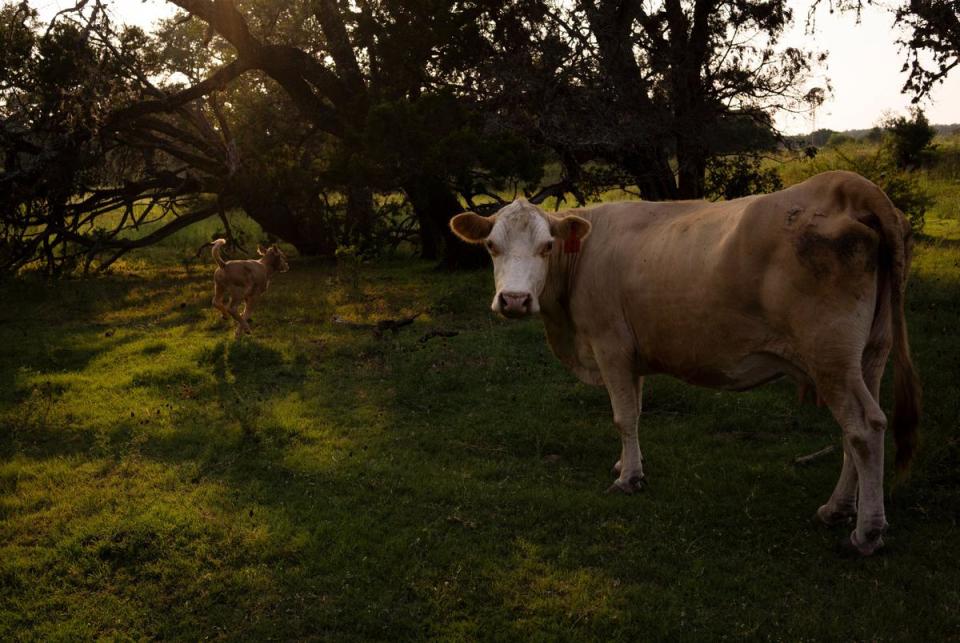

Harrison said the sketch of the 1,400-lot subdivision he included with his permit application was just a way to show the maximum number of homes that could fit on the property and the kind of water treatment system that would be needed if a developer bought the ranch.
“If a developer were to buy from us — and that really, truly is our last preference — they may do something like this and they may do something entirely different,” Harrison said. “I’m not a developer, and so I can’t really speak to what they would or wouldn’t do”
Harrison said he is considering selling the ranch in 10- or 20-acre lots to lower the density, but said he needs to see “how much money is being left on the table” with that option. Selling to a developer is likely the most profitable option.
Harrison’s application included a request for a “domestic reuse authorization,” which would allow treated wastewater to be used to water medians, parks and other common areas rather than discharging it into Dry Comal Creek.
Residents packed the Smithson Valley High School cafeteria on June 8 and told representatives from the Texas Commission on Environmental Quality that they were concerned about possible pollution, flooding and harm to local tourism if the Harrisons’ application was approved.
The people who come to Comal County to float the rivers were on Kristopher Bolstad’s mind as he addressed a TCEQ panel.
“What am I supposed to tell my customers when all of a sudden someone says or posts something that says there are 600,000 gallons of wastewater that flows down towards the Comal [River]?” said Bolstad, who owns Comal Tubes in New Braunfels. “I operate off of tourism. And while it might not seem like a big deal to y’all, New Braunfels is a very tourist-orientated place.”
Bolstad added, “We all live here. We’re going to have to deal with all this no matter what, and you get to go back to your homes. Just keep that in mind.”
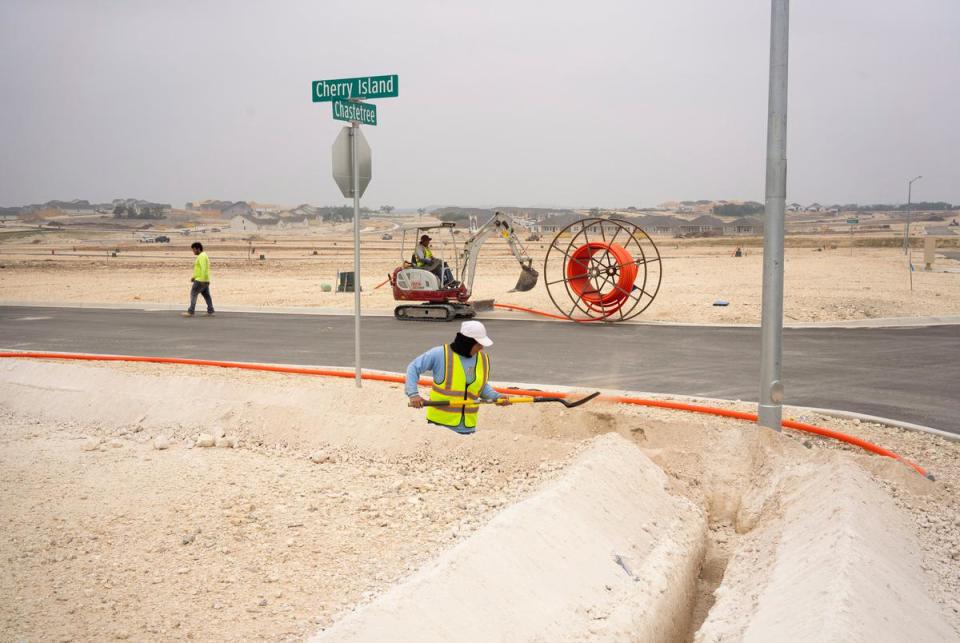
Battling to keep development at bay
Four miles from the Harrisons’ ranch on a triple-digit June afternoon, Milann Guckian cleaned out her small pool overlooking the rolling, tree-covered hills between San Antonio and Austin. She and her partner bought the 5-acre lot in 1996 as their retirement place, and after Guckian retired from Valero, where she worked as a lead technician for refinery operator crews in Corpus Christi, they moved into their custom-built home in 2017.
“We love it here, we built this house to grow old in. It would be a shame if we couldn’t age here,” said Guckian, 65.
But it hasn’t been the retirement oasis they dreamed of.
First came the quarry project. The same year that Guckian and her partner moved to Comal County, her neighbor sold his 1,500-acre ranch to a real estate investment group from Alabama. That summer, an 18-by-24-inch sign appeared on the fence announcing the land would be a quarry operated by Alabama-based Vulcan Material.
That inspired Guckian to found Preserve Our Hill Country Environment, and she rallied 86 affected parties, including nearby residents, businesses, the Comal school district and environmental groups to duel things out in court with Vulcan Material, a battle that has stretched for the past six years.
Guckian said Harrison was involved with the fight against Vulcan Material from the beginning, even donating money so the new organization could hire lawyers. Now her focus has shifted to fighting Harrison’s wastewater permit application with another coalition of locals.
“We only have finite resources, especially when it comes to water,” she said. “Look across the United States of America right now. And look how much trouble people are having with water. Texas is not immune to that.
“This is something that everybody needs to take responsibility for,” Guckian added. “That includes developers, industry and citizens.”
Guckian is hopeful that if their efforts to stop a high-density development on Harrison’s land fall short, the community can rally like they did a year before she moved to Comal County.
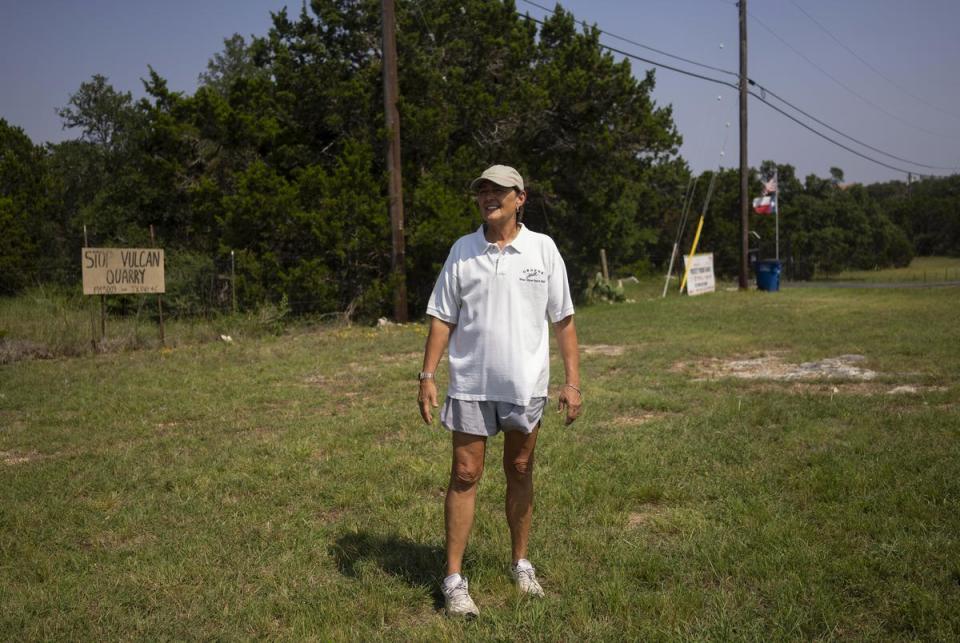
In 2016, Comal County residents reached an arbitration agreement with TCEQ, a developer named Randolph Todd and property owner Franklin Meyer about how the wastewater for Meyer Ranch, a 1,600-home, 700-acre subdivision, would be handled.
The settlement called for wastewater to be treated and reused on site, and the developer added a water retention pond to hold stormwater and reduce flooding in surrounding areas.
Ed Harris, a neighbor of Meyer Ranch who led the charge against the original subdivision plans and founded an organization called Friends of Dry Comal Creek, said the situation with the Harrisons’ ranch feels similar to the Meyer Ranch fight.
“When a property owner receives a permit for a wastewater treatment facility,” Harris said, “that means that their property is more valuable and a developer is willing to buy it.”
If the TCEQ grants the wastewater treatment permit to the Harrisons and a developer purchases the land, the new owner could use the same permit, according to the TCEQ. The agency said a new owner can apply to make amendments to the permit and wouldn’t be required to reuse treated wastewater on the property. In other words, they could discharge it into Dry Comal Creek.
The TCEQ said it is still responding to comments it has received about Harrison’s application. Commenters have 30 days after receiving a reply to request a contested case hearing, which is similar to a civil trial and is overseen by an administrative law judge. The judge would make a recommendation to TCEQ commissioners, who would make the final decision on the permit.
Jamie Miller, the wastewater engineer for Harrison’s project, said the technology to treat and reuse wastewater would be similar to what’s used at Meyer Ranch but would have even higher standards.
Miller said the treated wastewater would be tested daily to make sure it meets federal and state standards and that information would be available to the public.
“It is really important to us to be good stewards of our environment,” Miller said.
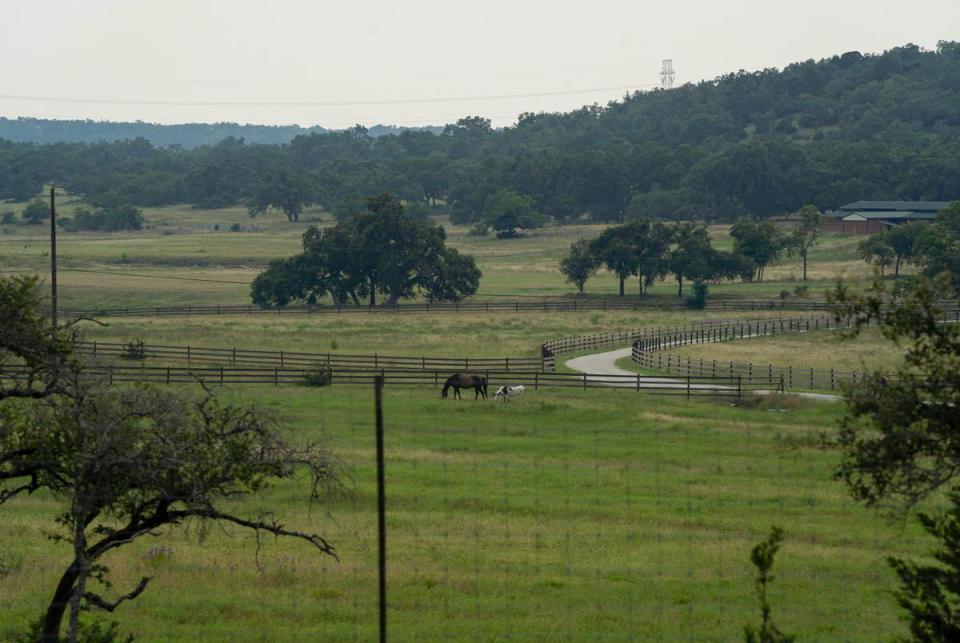
Mounting concerns about the Edwards Aquifer
Guckian called the reuse application a big step in the right direction. But it hasn’t alleviated many residents’ concerns about the prospect of a big subdivision on Harrison’s ranch.
During the June TCEQ meeting, Brandon Kuhn, a Comal County resident and avid cave explorer, asked the panel how many caves and sinkholes were on Harrison’s ranch. His question was met with a few seconds of silence before the panel disclosed that caves aren’t considered during the application process. That was followed by a gasp from attendees.
Kuhn and others noted at the meeting that many of the caves and sinkholes in Comal County are connected to the same cave system as Honey Creek, the longest known cave in Texas, and Natural Bridge Caverns, the largest commercial cavern in Texas and a major New Braunfels tourist attraction.
“They’re like arteries and veins of the human body. If you dump things, it’s kind of like each sinkhole and cave is almost like an injection site.” Kuhn said in an interview with The Texas Tribune after the meeting.
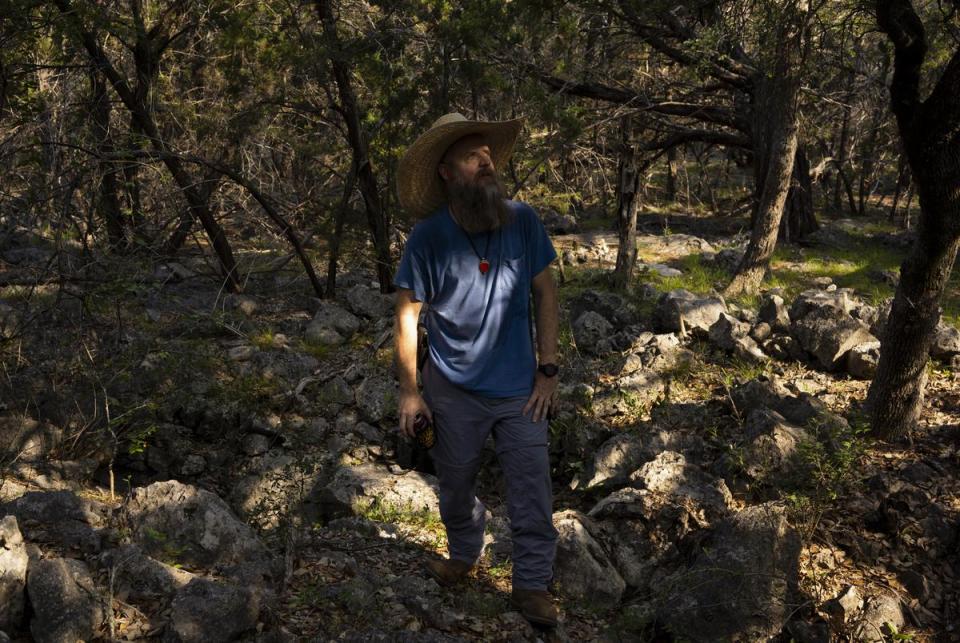
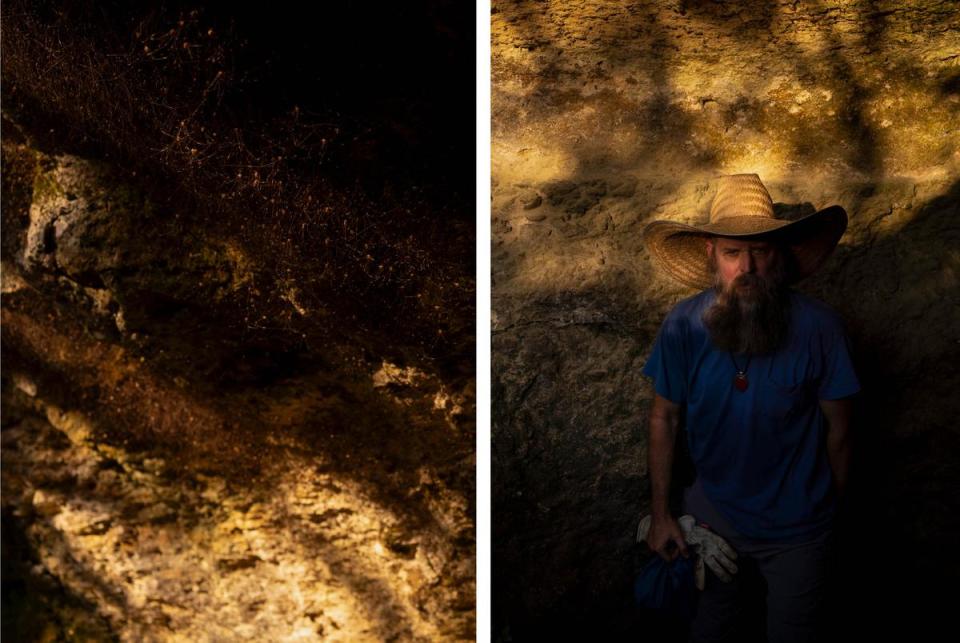
Annalisa Peace, executive director of the Greater Edwards Aquifer Alliance, is also worried about how a new subdivision on Harrison’s land could impact the aquifer.
Harrison’s ranch lies a couple thousand yards from the aquifer’s recharge zone — where groundwater can enter the aquifer — and sits on top of the contributing zone, where runoff can make its way into rivers and streams.
“For that site, this is just way too dense,” Peace said as she paced around her San Antonio office with Hairpin, her scruffy 17-year-old terrier, following at her heels. “There are caves there, this is on the contributing zone, it’s very near the recharge zone. A lot of that [waste]water would be going directly into the aquifer through these recharge features with no filtration.”
Peace said that because of state law, TCEQ does not have to consider geological features on the property until after a permit has been granted.
Peace is also concerned about adding more impervious cover in the area — roofs, roads and driveways that cause runoff during storms that can lead to flooding or polluted stormwater making its way into rivers and creeks.
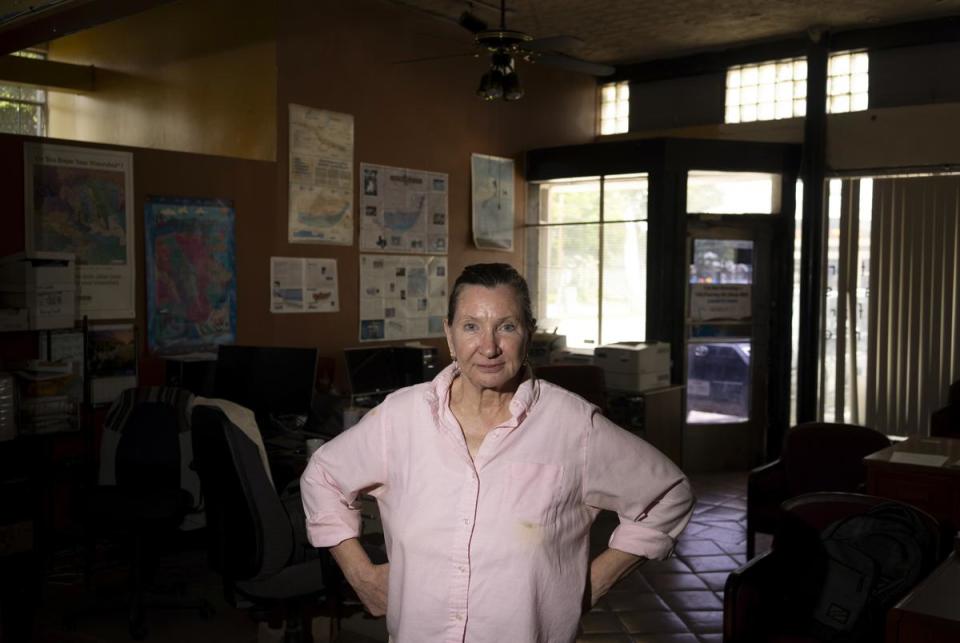
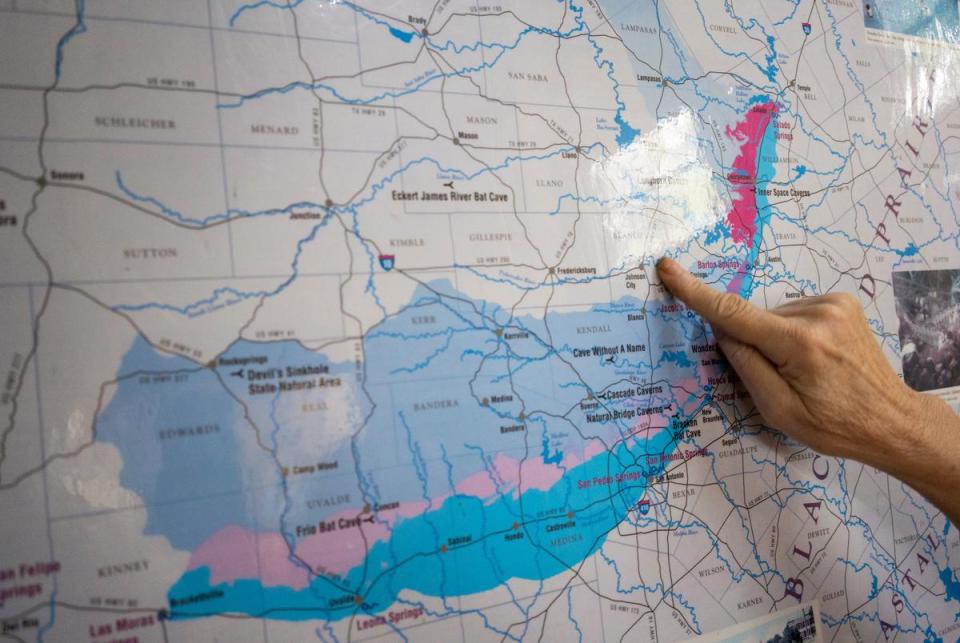
“These areas are getting a lot of development, and with the increases in impervious cover, you’re going to see increased flooding in these communities downstream, which tend to be lower income.” Peace said. “They’re bearing the brunt of land-use policies up here.”
Harrison’s neighbor Erin Bell lives with her family on Big Heart Ranch, where she breeds horses and offers clients lessons in dressage, a form of competitive horse riding. She’s also worried about how a subdivision would affect her business.
“I don’t think developers are thinking about us. They don’t know how much they’re going to affect us,” said Bell, whose family bought the 34-acre ranch in 2012. “I’ve already started fencing my property to protect myself a little bit.”
Bell is also frustrated with what she calls Harrison’s lack of transparency.
“He’s a businessman before he's anything else. Whenever we moved here, he said he had no intention of ever selling,” she said. “Later he said he was maybe going to sell it to someone who would keep it the way it is. And that keeps changing.
“That’s why when he says his intentions are this or that, I don’t really believe him.”
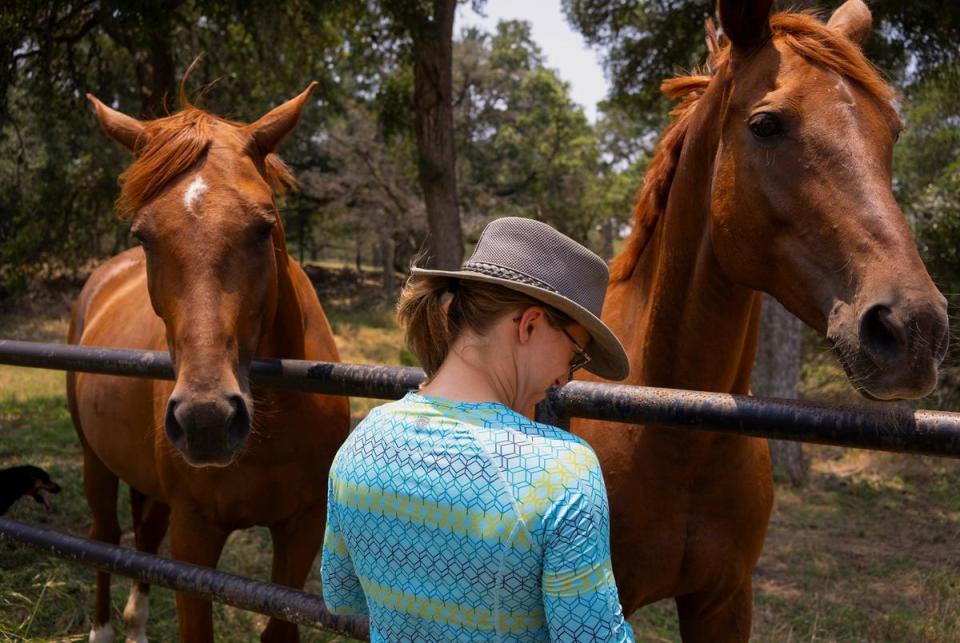
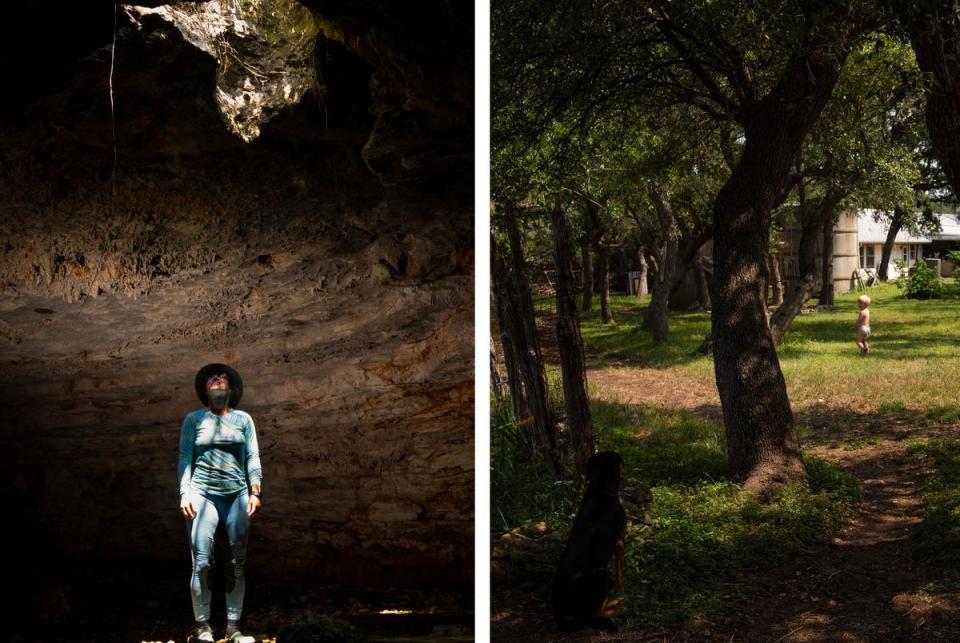
“A lot of people want to live here”
Following the TCEQ meeting, Harrison said he was inspired by the number of people who attended and shared their concerns. He added that he would try to communicate more with the community about his plans for the ranch.
But he also said his neighbors need to have more realistic expectations about development in the area.
“New Braunfels has just exploded and is going to continue doing that. It’s a beautiful part of the world. And a lot of people want to live here,” Harrison said. “One of the things I see over and over is once somebody gets here, they go, ‘Hey, I’m here now, let’s close the gates and keep everybody else out.’ It’s just not realistic — there will be more developments.”
Harrison said he fondly remembers being on the same side as Guckian and admires the way she has managed to halt the quarry’s opening for the past six years. They won in a lower court before an appeals court reversed that decision and allowed the TCEQ to issue a required air quality permit, and now they’re asking the Texas Supreme Court to hear the case.
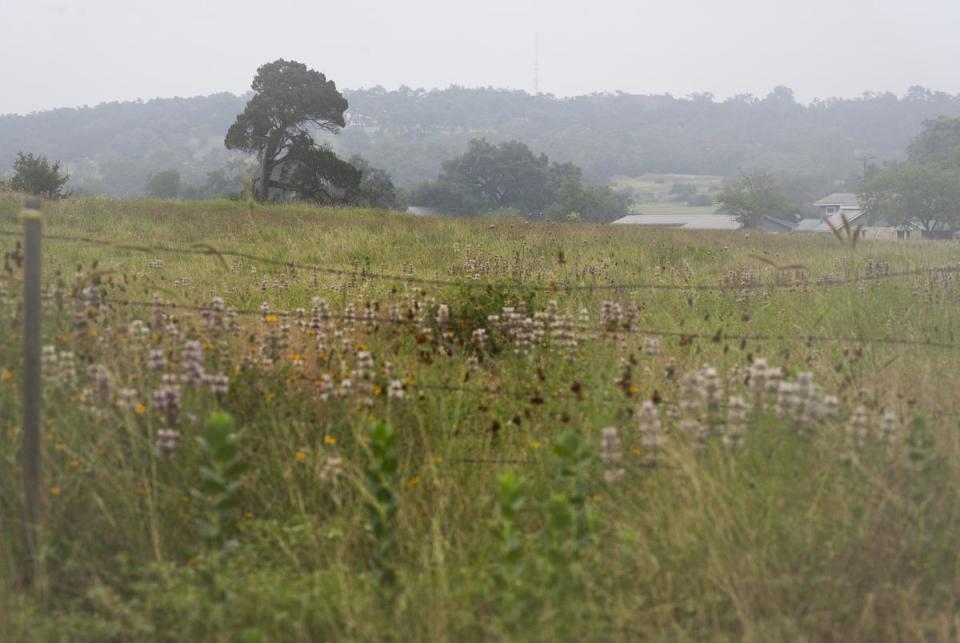
“I’ve been on both sides of the table, right?,” Harrison said. “I’ve been with my neighbors and have helped fund my neighbors in these exact kinds of meetings about Vulcan quarry. I’ve experienced some of these same kinds of frustrations.”
Guckian said even though she and Harrison are on opposite sides of this fight, “he’s a nice guy, very family oriented. He’s a good man when it comes to it. The next time I see Doug, I’ll hug his neck.”
But Guckian believes the Hill Country’s land and resources need to be carefully preserved.
“I’m not against development,” she added. “I just want responsible development that takes our natural resources into consideration.”
Disclosure: Valero has been a financial supporter of The Texas Tribune, a nonprofit, nonpartisan news organization that is funded in part by donations from members, foundations and corporate sponsors. Financial supporters play no role in the Tribune's journalism. Find a complete list of them here.
Join us for conversations that matter with newly announced speakers at the 2023 Texas Tribune Festival, in downtown Austin from Sept. 21-23.
Correction, July 13, 2023 at 2:53 p.m. : A previous version of this story incorrectly stated that a 3rd Court of Appeals ruling allowed the Vulcan quarry to begin operations. The ruling allows the TCEQ to issue the company an air quality permit, but other permits are required before the quarry can operate.

